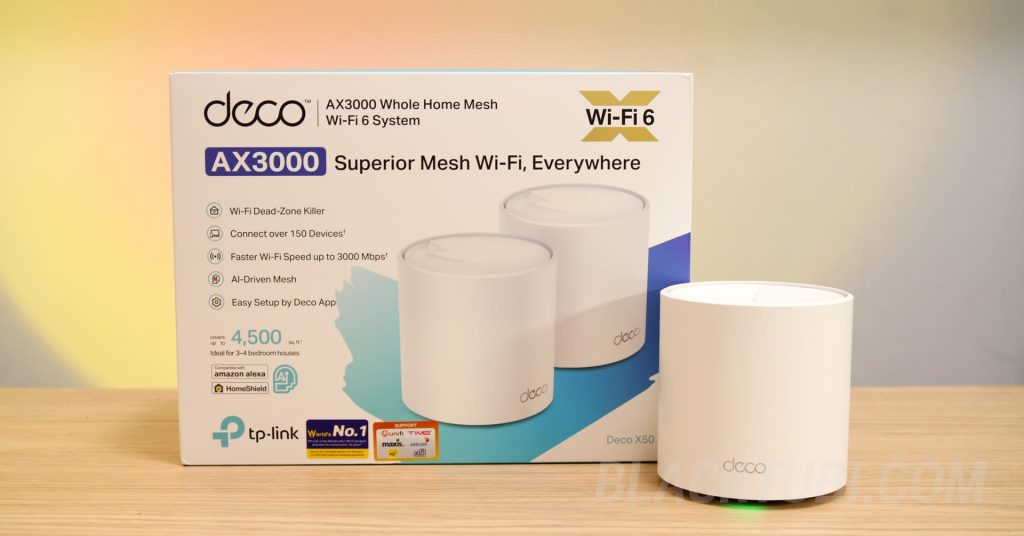
Mesh WiFi is the best solution to poor WiFi signal for bigger houses due to how simple it is to install them and they actually work as promised. Introducing the new Deco X50 from TP-Link, a WiFi 6 AX3000 whole home mesh WiFi system with a claimed coverage up to 6500 sq ft.
There are a lot of of good things about the Deco X50 and affordability is the biggest selling point. In fact, if you used TP-Link entry-level mesh WiFi such as the Deco M4 previously, the Deco X50 which costs RM899 for the 2-pack model is a great upgrade with significant performance boost.
Table of Contents
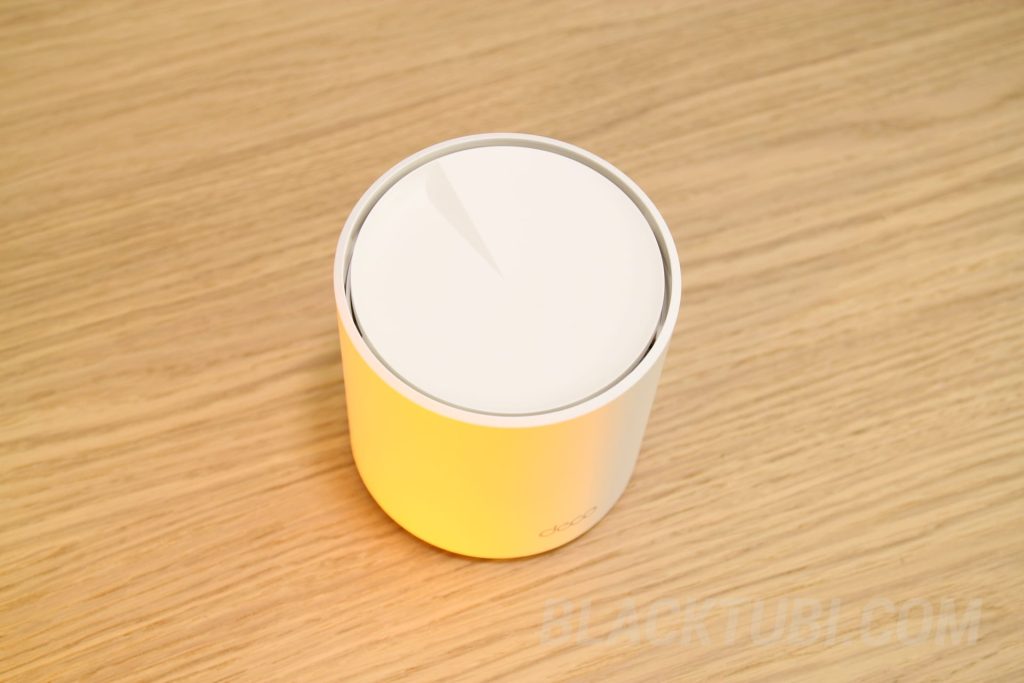
Upgrading to WiFi 6 technology will provide faster speed and stronger coverage especially for your new WiFi 6 devices. This will also benefit older devices due to technology improvement in WiFi signal processing resulting in a WiFi network that can support plenty of devices while being faster.
I always liked how TP-Link mesh WiFi looks, I think are really clean and simple. The best part is the neutral design language will fit into most modern interior design without being obstructive. That’s really important as mesh WiFi should never be hidden in a cabinet for the best coverage.
Deco X50 Mesh Performance Test
Let’s jump right into the performance of the Deco X50. Thanks to WiFi 6 capability, the Deco X50 is much faster than the predecessors. The WiFi performance and stability has vastly improved over the Deco M5 or Deco M4 it replaces.
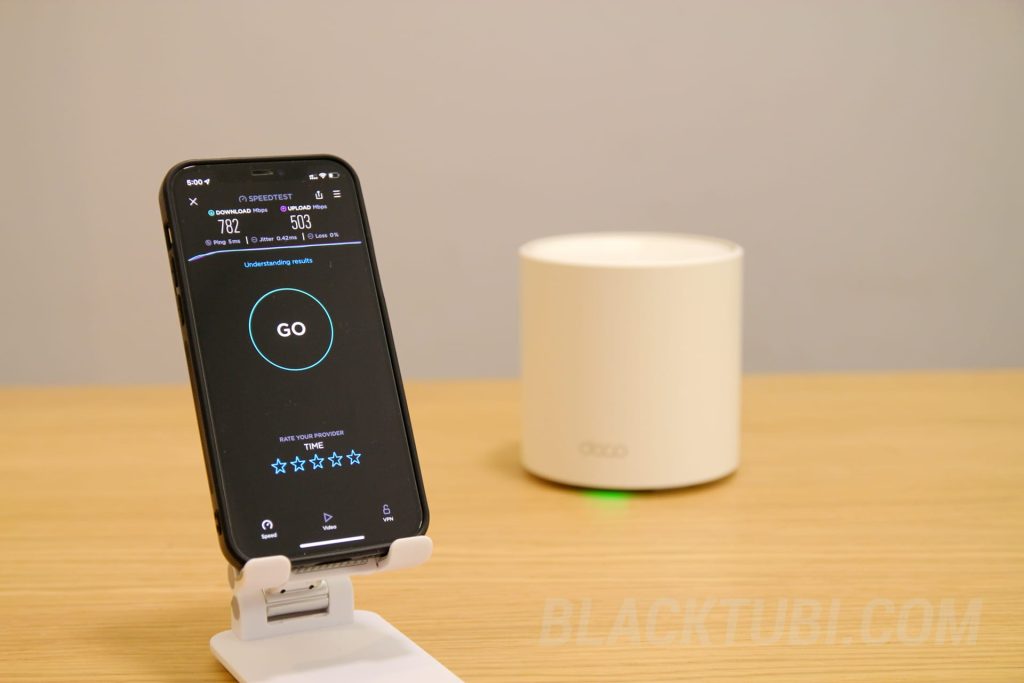
Ths biggest difference is probably the maximum WiFi speed. I can now get 800Mbps easily on my phone with the Deco X50 compared to an older Wireless AC mesh WiFi system. This is tested on a short distance without any obstruction to the main mesh point.
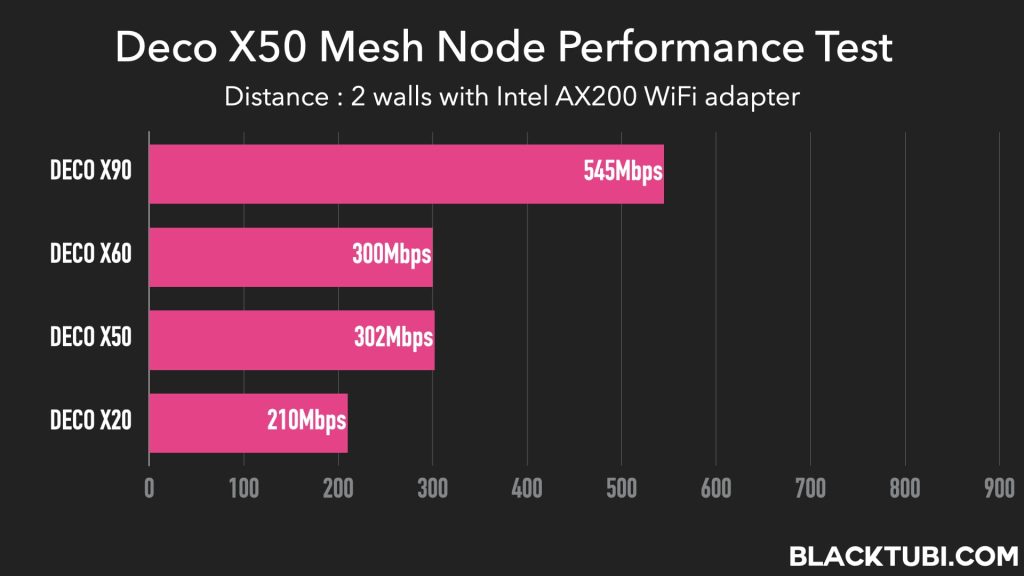
On the second location bedroom, I can still get a decent 300Mbps from the mesh node of the Deco X50 mesh WiFi system. It outperforms the Deco X20 rather significantly and it’s even slightly faster than the Deco X60.
Deco X50 Hardward and Specs
| WiFi Band 1 | 2.4Ghz WiFi 6 up to 574Mbps (2×2 40Mhz) |
| WiFi Band 2 | 5Ghz WiFi 6 up to 2402Mbps (2×2 160Mhz) |
| CPU | Qualcomm Quad-Core CPU |
| RAM | 512MB |
| Ports | 3 x Gigabit Ethernet LAN/WAN Port |
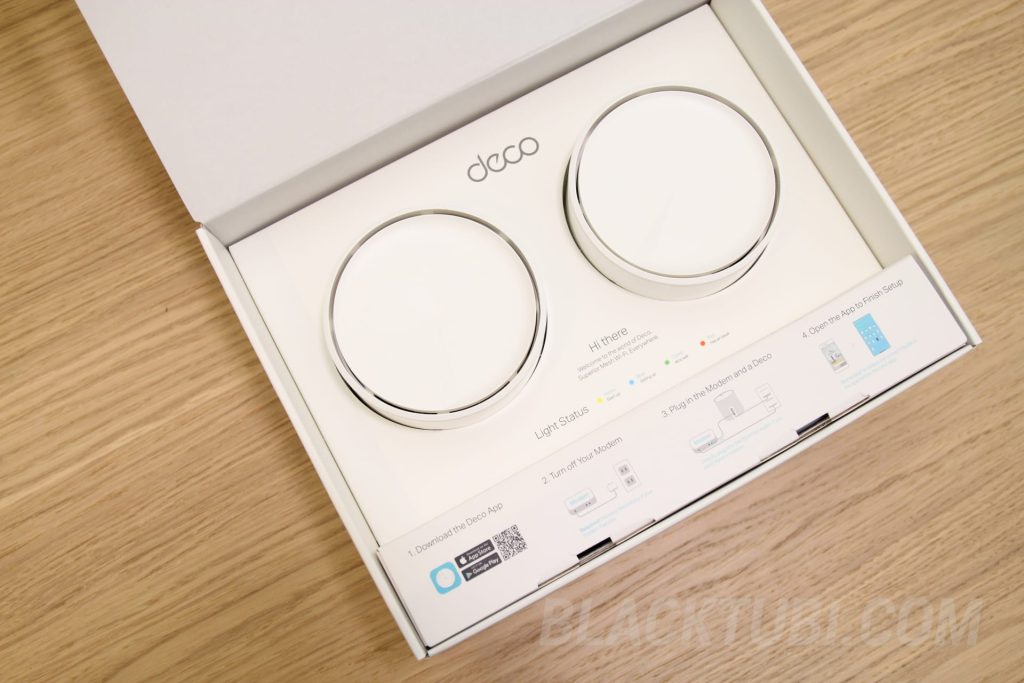
TP-Link did not tell us much about the specifications but we know it comes with a Qualcomm Quad-Core CPU and 512MB RAM. It also comes with a WiFi 6 radio that can support up to AX3000 with 160Mhz bandwidth supported on the 5Ghz band.
If you read my review of the Deco X60 in the past, the Deco X60 is powered by a 4 stream 5Ghz radio with 80Mhz bandwidth. However, the Deco X50’s 5Ghz radio is slightly different. It’s just 2 stream but the bandwidth is now doubled to 160Mhz to suit most WiFi devices in the market.
This means devices that supported 160Mhz mode will be able to enjoy a much faster speed. That include most laptop in the market that’s powered by the Intel AX200 WiFi 6 receiver and certain Android smart phones as well.
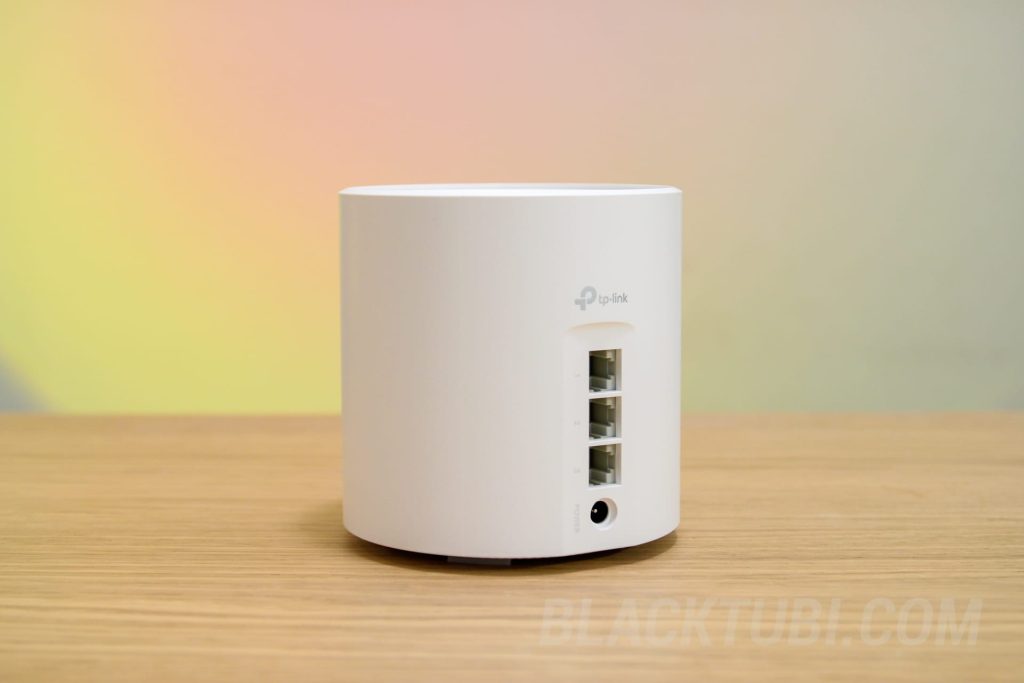
The Deco X50 is also the first TP-Link Mesh WiFi with more than 2 ports and that’s a great improvement. In fact, both the main unit and mesh nodes come with 3 ports on each of them and they are all functional. They can work in wired backhaul for better performance or connect other devices to them.
Installing Deco X50 Mesh WiFi
The best way to install the Deco X50 mesh WiFi is by connecting the main unit directly to the modem. This will ensure there will be no bottleneck caused by the router provided by the service provider and reduce interference. Then, put the remaining mesh nodes within 2-3 walls from the main unit.
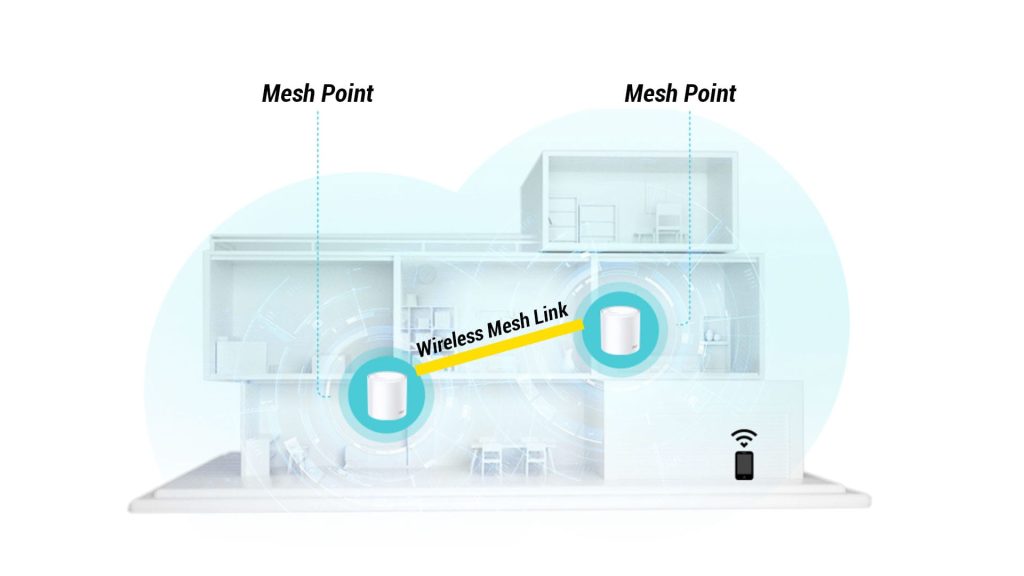
Once that is done, the mesh nodes will wirelessly link with the main unit and work together to blanket your entire home with a single WiFi network. Devices will automatically switch between the coverage of the nearest mesh node as you move around in your house for the best signal coverage.
Roaming and Steering
TP-Link’s excellent mesh roaming technology is now known as AI-Driven Mesh and it works like magic. The network switching is almost unoticeable as I walk around in my house. My devices will always switch to the strongest mesh points seamlessly without any manual switching required.
That’s because Deco Mesh WiFi system support the 802.11r fast roaming feature in addition to the standard 802.11k/v roaming assist. Having 802.11r fast roaming technology can provide millisecond level roaming capability for supported devices like most high-end smartphones.
Firmware and Features
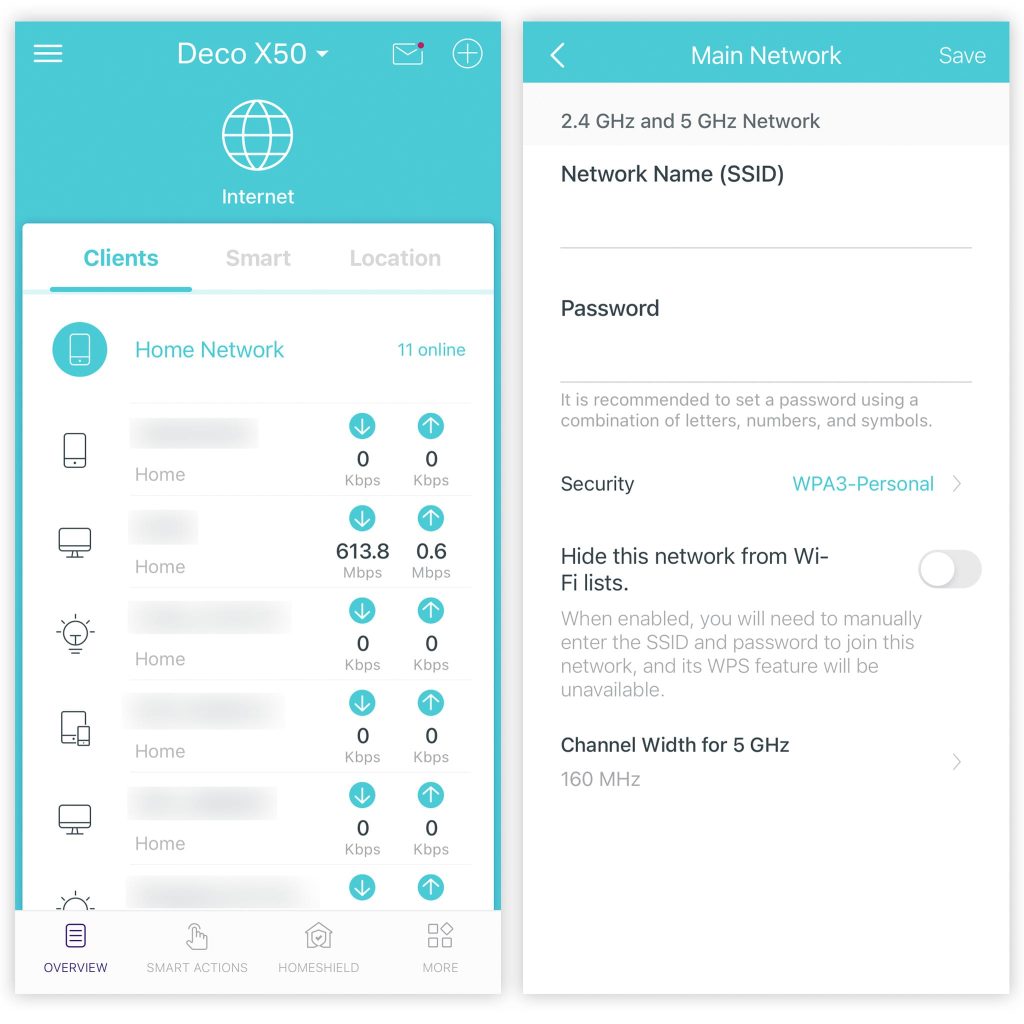
TP-Link software for their mesh WiFi has always been really good. The app is really easy to use and the software is very stable. Since the Deco Mesh WiFi is linked to TP-Link cloud, you can view the status of your home network easily even when you are away from home.
The star of the show is TP-Link’s HomeShield security software. It is a software suite including an antivirus, advanced parental control feature and a quality of service (QoS) feature. Some of the features are free but the Pro features will require a monthly subscription.
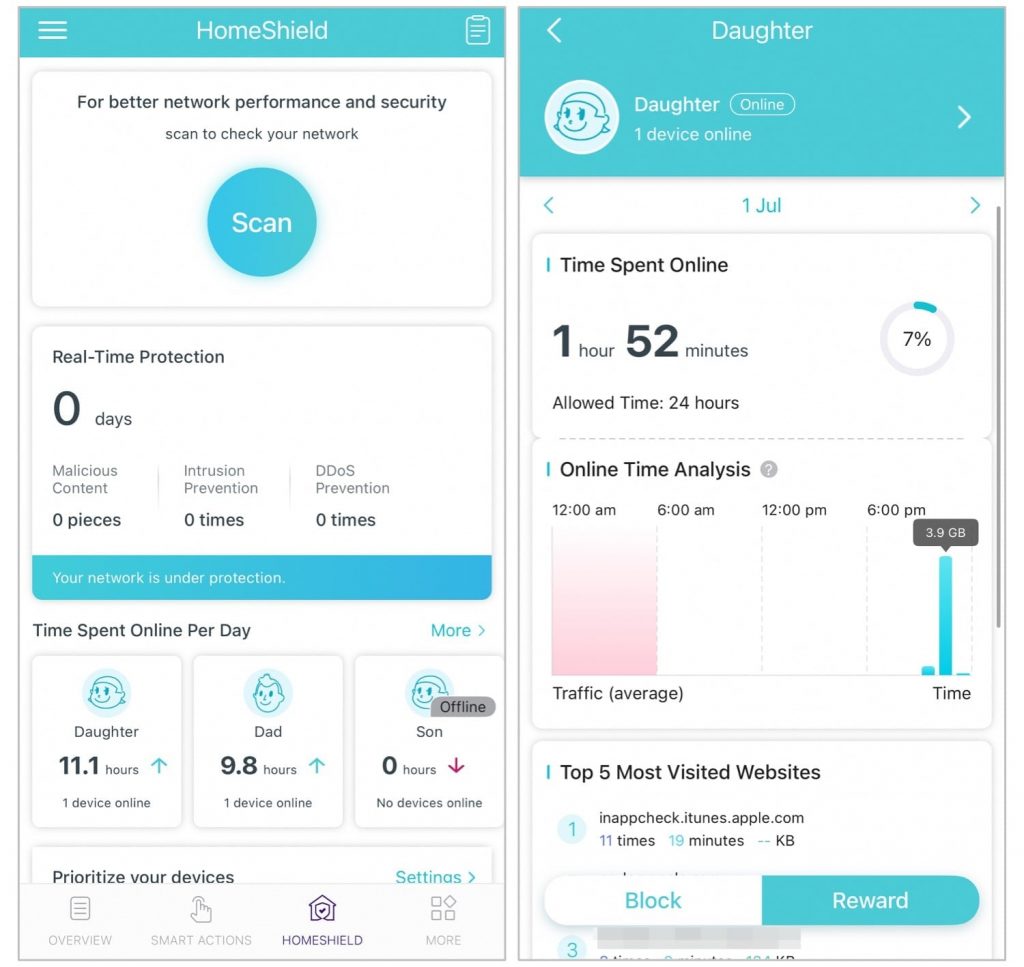
The best part of the HomeShield Pro software is the parental control feature. It can filter webpages based on category selected and it works really well. There are plenty of categories to choose from and TP-Link have a very extensive database of website for each categories.
The reporting feature in the app is also great. It will show usage trends, top blocked and top visited websites by each devices which will be really handy if you have young kids in your family. I find it really handy to monitor whether the kids in my family are using a ton of Internet when I’m not around.
Closing Thoughts
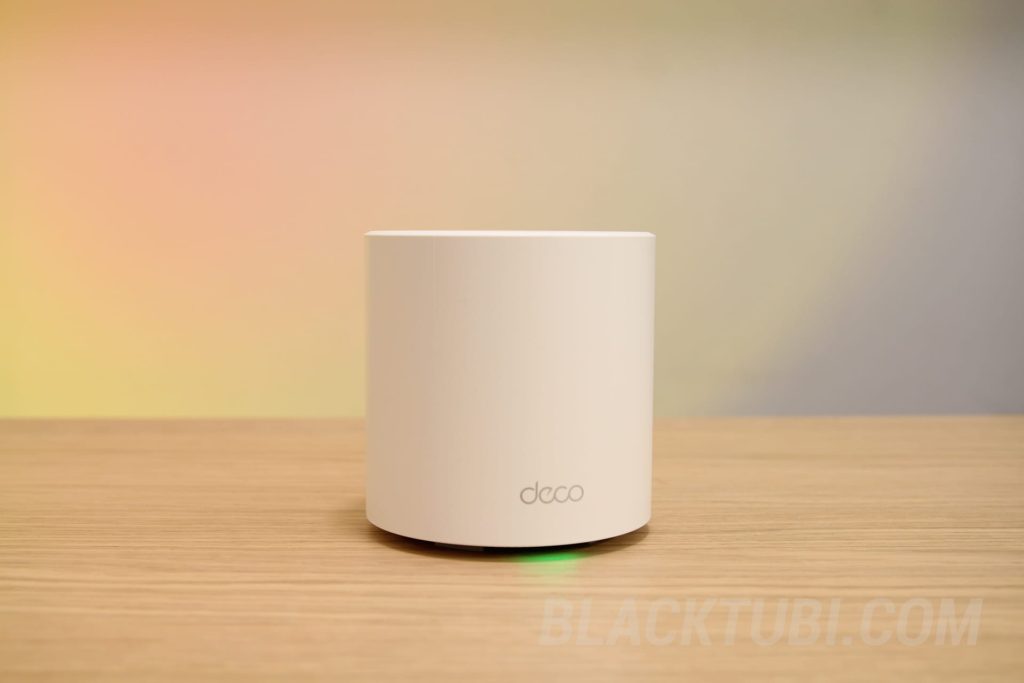
At RM899 for the twin-pack model, the Deco X50 is cheaper than other competing WiFi 6 AX1800 mesh WiFi in the market. That makes the Deco X50 an enticing value and will probably be really popular. It’s not the fastest mesh WiFi in the market but it is enough for those with a 300-500Mbps Internet connection.
So, for the vast majority of people, the Deco X50 will perform well, looks good and doesn’t cost a fortune. I guess TP-Link finally got a great WiFi 6 mesh WiFi with the right price and performance. TP-Link also listened to what consumers wanted and added more ports on their product.
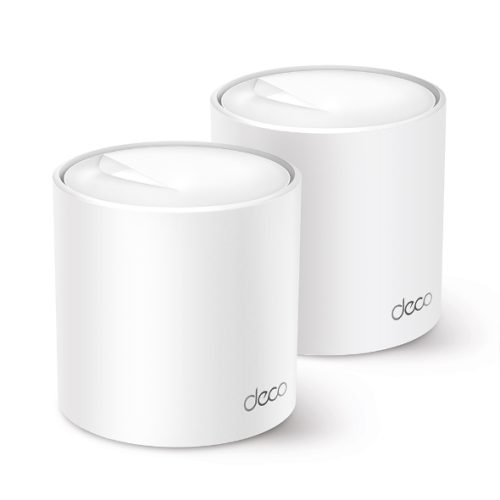
TP-Link Deco X50
9.0
Tubi Rating
pros
- 3 Gigabit LAN/WAN on each unit
- Excellent fast roaming and mesh steering
- Easy to setup with Deco app
cons
- Monthly subscription required to get more features from HomeShield Pro

Hi!
My setup is two Deco m5, one on our living room(main Deco) and the other on my bedroom.
Our broadband plan is 500mbps and I am currently getting 250-280mbps on my bedroom with this setup.
Will I get better results on my bedroom if I get one Deco x50 and set it as our main Deco?
TIA!
No, you will see a bigger improvement only if the mesh node is Deco X50 as well.
Thank you!
Hi !! I plan to buy a pair of X50 for my home cause my provider’smodem-router has a poor wifi (especially in the bedrroms). The distance between the 2 X50 will be 4 meter and there are 2 walls among them (living room and bedroom).The connection between the two X50 will be wireless and not wired backhaul. In your opinion will be sufficient speed between the X50s??
You should be able to get around 150-200Mbps from the 2nd unit of Deco X50 under optimal conditions. More than enough for work and 8K steaming.
Is the X50 better than the X60 in terms of range and speed? Current plan is 600mbps and will use wired backhaul. Also is the ai-driven mesh technology really a big deal? The X60 doesn’t have this.
If you have wired backhaul, I will recommend getting the Deco X60 instead as it comes with 4×4 which means 4 transmission chain that will provide a better performance. AI-Driven mesh is basically just software and TP-Link probably already added it into most of their WiFi 6 models.
Hi! Does a wired backhaul mean that the mesh device is connected to an ethernet cable?
Yes, connecting the main unit and mesh node with an Ethernet LAN cable will provide better connection speed than using wireless backhaul.
What are the differences on Deco X50 Version 1 vs. 1.6 vs 2 ? Mine version 1 does not seem to have the 160Mhz Channel width option
Perhaps you can check the firmware version as this is probably more to do with firmware or Tapo app version.
Thanks. Found out the 160Mhz channel width option will show up when you tab on WIFI SSID or Password.
My house has LAN cables in every room, all leading to the garage where the router is. Could I connect all 3 Deco X50s to separate LAN ports on the modem? Would this break the “mesh”?
I will suggest testing whether each port on the modem can function properly. Many ISPs only enable the first LAN port while disabling the rest. If all ports are functionable, your Deco should work.
Please check more info about Ethernet backhaul. https://www.tp-link.com/us/support/faq/1794/
Hi! I currently have a deco E4 mesh network and planning to buy a faster add-on unit to use as main node. I have 300mbps internet speed from my ISP. Is it worth getting an x50 or should I only buy an M5 instead? The price difference is minimal. Thanks alot!
Might as well just upgrade the whole thing to the Deco X50. Changing just the main unit won’t give you much improvement.
I have 3 E4 mesh and bought 1 x50 as main deco (500mbs ISP). Main Deco (x50 5G wifi) will be super fast (getting 498mbs) but the remaining e4 will still be slow. I plan to replace all e4 with another x50, then I’ll use ethernet Backhaul Technology of X50, for sure both x50 will share the 500mbs.
Dilemma with Deco M9+ and UnifiTV. I currently have Unifi and have TP-Link Deco M9 Plus mesh (2 units). The Unifi modem, main Deco M9, UnifiTV set top box, and numerous other devices are located in the same area In the lounge room. At the moment, the second Ethernet port (of the main Deco M9) is dedicated to the UnifiTV set top box. I now have a few other devices (TV, computer, security system, and the UnifiTV box) that I would like to connect via ethernet. The dilemma is how do I accomplish this? I thought I would just connect… Read more »
Well there really isn’t any pretty solution involving the Deco M9 Plus unless using it with an existing router and configuring in on AP mode. Like you said, the Deco X50 isn’t tri-band and will somewhat create a bottleneck when used with the M9 Plus. You’re right, HomeShield Free is not as comprehensive as HomeCare.
You can consider the latest Deco XE75 from TP-Link which uses 6GHz backhaul but that model is expensive.
Currently I’m using Deco x20 as an AP as it is connected to the router and another Deco x20 at the other side of the house. While connected using LAN on the other Deco x20, I can get around 500Mpbs on Speedtest on a Gigabit connection. Will I achieve 800-900Mpbs with the same setup if I were to replace my Deco x20 with Deco x50 or x60?
You might want to look into the Deco X90 instead. Things are a lot harder when it gets beyond 800Mbps.
My house is 22 x 75 double storey. Current router at the back end of the house connected to the pc. My tv is on the ground floor at front part of the house. Streaming 4k. Autogate needs 2.4 ghz connection too. If possible I like to save some cash and get x50 2 pack. Would it be sufficient? Any idea what are the speeds I will be looking at around the tv area?
If no choice I will get the x90.
Ugly house layout : https://ibb.co/PYHkjLt
Optimally the mesh node should be placed on the center of the ground floor at your dining area. With that, I expect the Deco X50 should be able to provide around 200Mbps at the ground floor, definitely good enough for 4K streaming. As for the second floor, expect around 300-400Mbps in room 2 and around 200Mbps in the master bedroom. You will be able to get around 850Mbps when within the same room of the Deco X50 main unit.
The Deco X90 will be around 2x faster than the Deco X50.
If you would have to choose between X50 or X60 which one would you choose? Assuming you have only wifi6 – 80Mhz devices and both are priced the same. X60 is quite older, so I am making the assumption that the X50 is better, because it’s newer. At the other side it has 2 antennas less than the X60. I’m curious about your opinion since you’ve tested both models.
The Deco X60 is still a superior product. That’s because running on 160Mhz mode will always result in slightly weaker signal than 80Mhz due to government regulation. That’s why TP-Link lets user to disable 160Mhz mode on the Deco X50.
Hi, can I check if any of the ports of the unit connected to the fiber modem will be reserved for Unifi/Hypp TV and therefore unusable for other devices (like a switch)?
TP-Link lets you to decide whether you want to dedicate a port for HyppTV or not.
Can i say the main different between X series and M series is WiFi 6 ? Should most of my IT gadgets are 3-4 yrs old (mid range), will I still able to enjoy the benefits of speed “upgrade”? Currently on M9+
Well it depends. The Deco M9 Plus is TP-Link previous flagship and you will need to upgrade to a tri-band WiFi 6 mesh WiFi system such as the Deco X68 or Deco X90 to see any significant improvement.